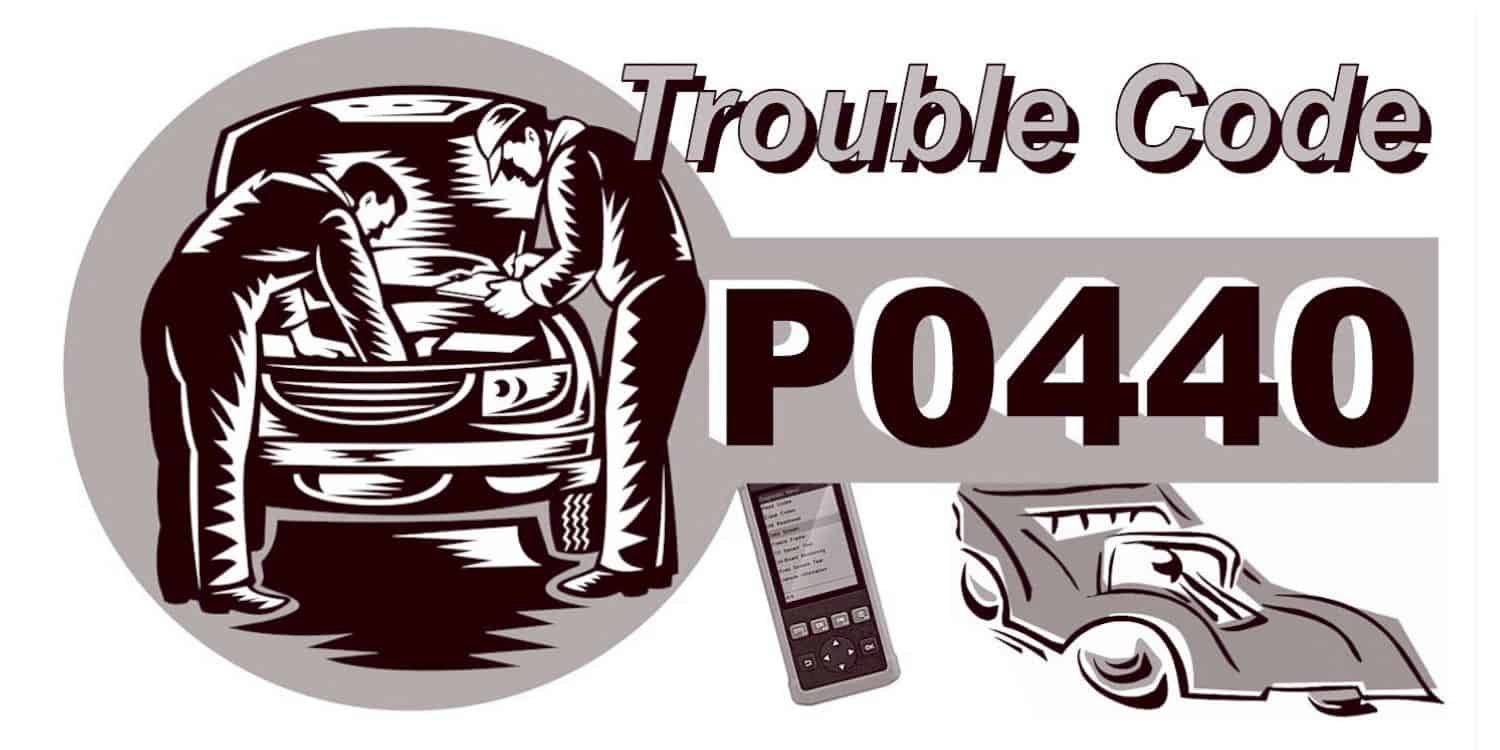P0440 code is set off when the computer of your vehicle's engine detects a problem related to the air injection aspect of the Evaporative (EVAP) Emission Control System.
As far as trouble codes go, code P0440 doesn't impose much risk and it can be easy to diagnose and fix.
The exact culprit behind the issue differs from one car model to the other, so you'll need to do some testing to pinpoint the faulty component. Continue reading to find out more about the code P0440.
P0440 Code Definition
The P0440 code is defined as Evaporative Emission Control System Malfunction. It's a diagnostic trouble code (DTC) which is a generic OBD2 powertrain code.
The code P0440 applies to all vehicles manufactured since 1996, although some models will require extra or specific steps for repairing.
Other Troubleshooting Codes about Evaporative EVAP Emission Control System
P0441 CODE: Evaporative (EVAP) Emission Control System Incorrect Purge Flow
P0442 CODE: Evaporative (EVAP) Emission Control System Small Leak
P0446 CODE: Evaporative (EVAP) Emission Control System Vent Control Circuit
What Does the code P0440 Mean?
The code P0440 is triggered when the engine control module (ECM) detects an issue with the pressure of your vehicle's Evaporative (EVAP) Emission Control system.
The P0440 code could correspond to a leak present in the fuel tank vapor system, or a malfunction in one of the system's vapor pressure sensors.
The Evaporative (EVAP) Emission Control System is one of the ways your engine utilizes to reduce its harmful emissions. It prevents the fuel vapors from escaping out of the fuel tank and into the atmosphere.
These vapors are trapped in the charcoal canister which contains small pellets made of activated charcoal to absorb the fuel vapors. This happens when the vent control valve is open and the vapors move through a vent tube and into the charcoal canister.
The purge volume control valve allows vapors to travel from the EVAP system into the engine air intake to be burned. When it's open, the engine draws fuel vapors from the charcoal canister to be used in the air-fuel mixture required for combustion within the cylinders.
Since the 1990s, fuel tanks of vehicles have been sealed as such to minimize the amount of fuel reaching the atmosphere.
But when a leak is picked up by the Engine Control Module (ECM) or one of the vapor pressure sensors fails, the code P0440 is triggered.
The ECM detects these issues while the vehicle is turned off and the vent control valve is closed. During this state, the ECM monitors the pressure of the EVAP system. If the system fails to maintain proper pressure, ECM will trigger the check light engine.
What are the Causes of the Code P0440?
- The gas cap is defective, damaged, or loose. ( most common cause )
- The fuel tank is leaking or damaged.
- Leaking of the charcoal canister, the fuel filler neck, the vent valve, or any component of the fuel vapor system.
- The fuel vapor pressure sensor is faulty.
- Hoses of the EVAP system are disconnected, leaking, or damaged.
- The vent valve is defective.
- The purge valve or purge solenoid is defective.
Other Troubleshooting Codes about Evaporative EVAP Emission Pressure Sensor
P0452 CODE: Evaporative (EVAP) Emission Pressure Sensor Low Input
P0453 CODE: Evaporative (EVAP) Emission Pressure Sensor High Input
Other Troubleshooting Codes about Evaporative EVAP Emission System Leak
P0455 CODE: Evaporative (EVAP) Emission System Large Leak
P0456 CODE: Evaporative (EVAP) Emission System Small Leak
Another Troubleshooting Code about Evaporative EVAP
P0496 CODE: Evaporative (EVAP) Flow During a Non-Purge Condition
What are the Symptoms of the P0440 Code?
The issues caused by the P0440 code don't typically show in the drivability of the vehicle. However, there are a couple of mild symptoms that you can notice:
- The check engine light going off.
- A smell of fuel vapor around or inside your vehicle.
( If the leak is large enough, vapors could be dangerous to breathe) - Loss of fuel mileage.
Is the Code P0440 a Serious Problem?
The P0440 code isn't something serious. The driver is very unlikely to notice any change associated with the P0440 code other than the check engine light going off.
That being said, it's important that you resolve the issue as soon as possible, just like any other check light engine DTC.How to Diagnose the P0440 Code?
- Use a scanning tool to check if there are any diagnostic trouble codes present and note any freeze frame data.
- Clear all codes from the engine computer.
- Check for the most common problem; a loose gas cap.
- Visually inspect all the components of the fuel system for any damage or signs of leaks, including the fuel tank, the fuel cap, as well as the fuel and vapor lines.
- Use a smoke machine ( set to visible vapor or smoke ) to check if there's a leak in the fuel vapor system.
How to Repair the P0440 Code?
- Tighten, or better yet, replace the fuel cap even if there's no sign of evident damage.
- Replace faulty or leaking hoses and install new ones securely.
- Replace damaged components such as the vapor control vent or carbon canister.
- Replace the vapor pressure sensor.
James is a certified auto technician specializing in commercial vehicles. With 30 years of experience under his belt, James has encountered almost every type of automotive issue there is! Besides his day job at the repair shop, he is also an amateur race car driver.
